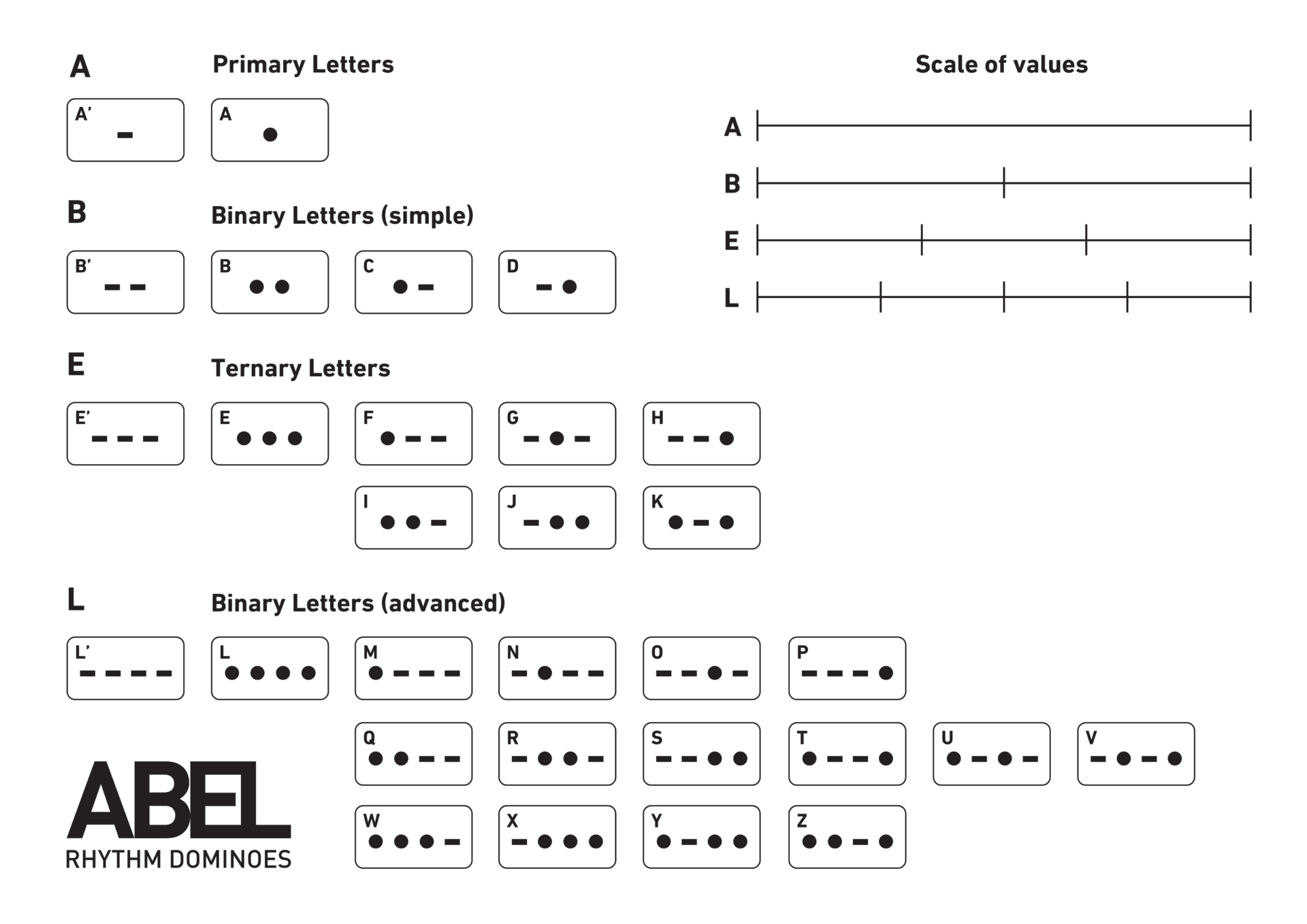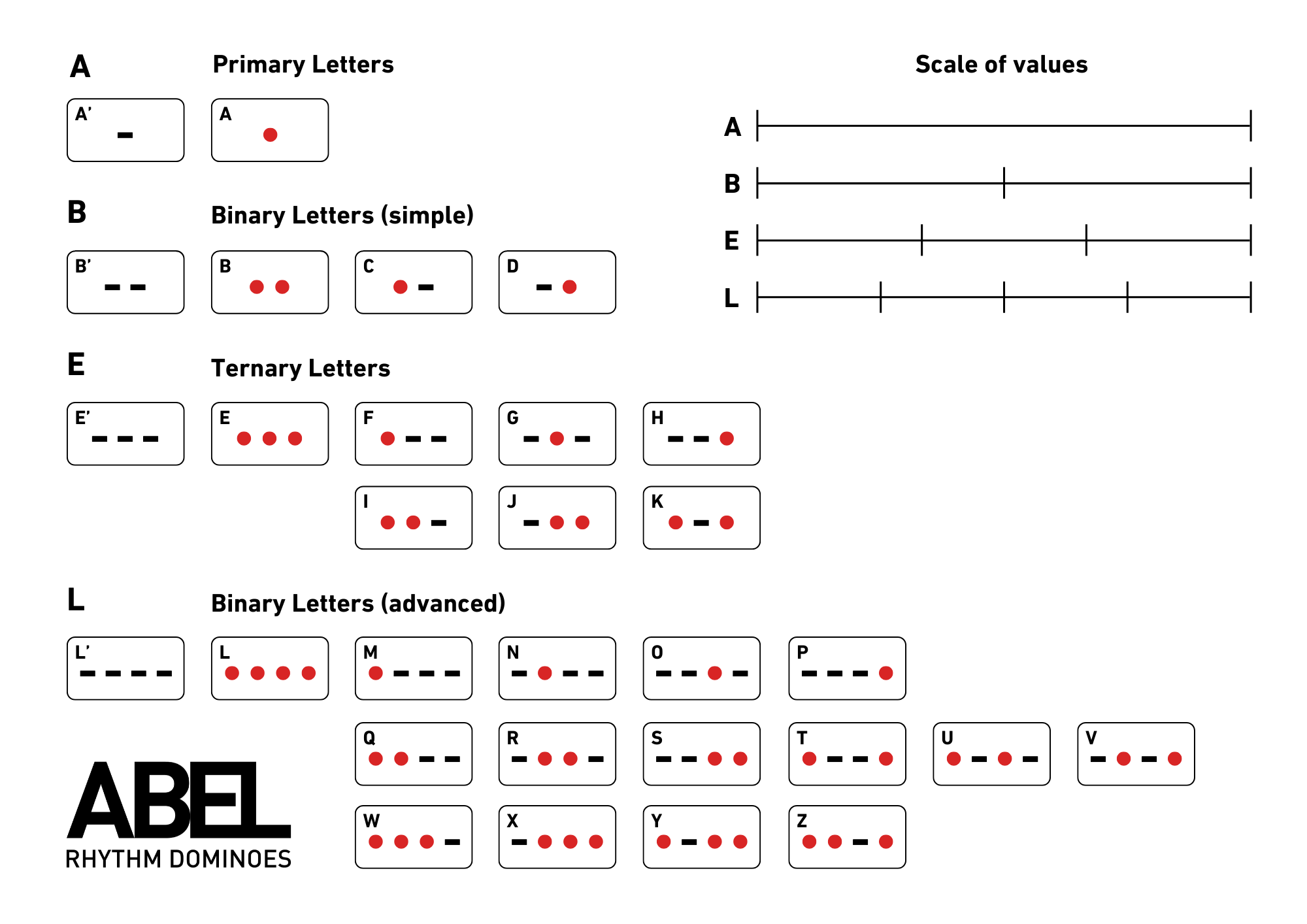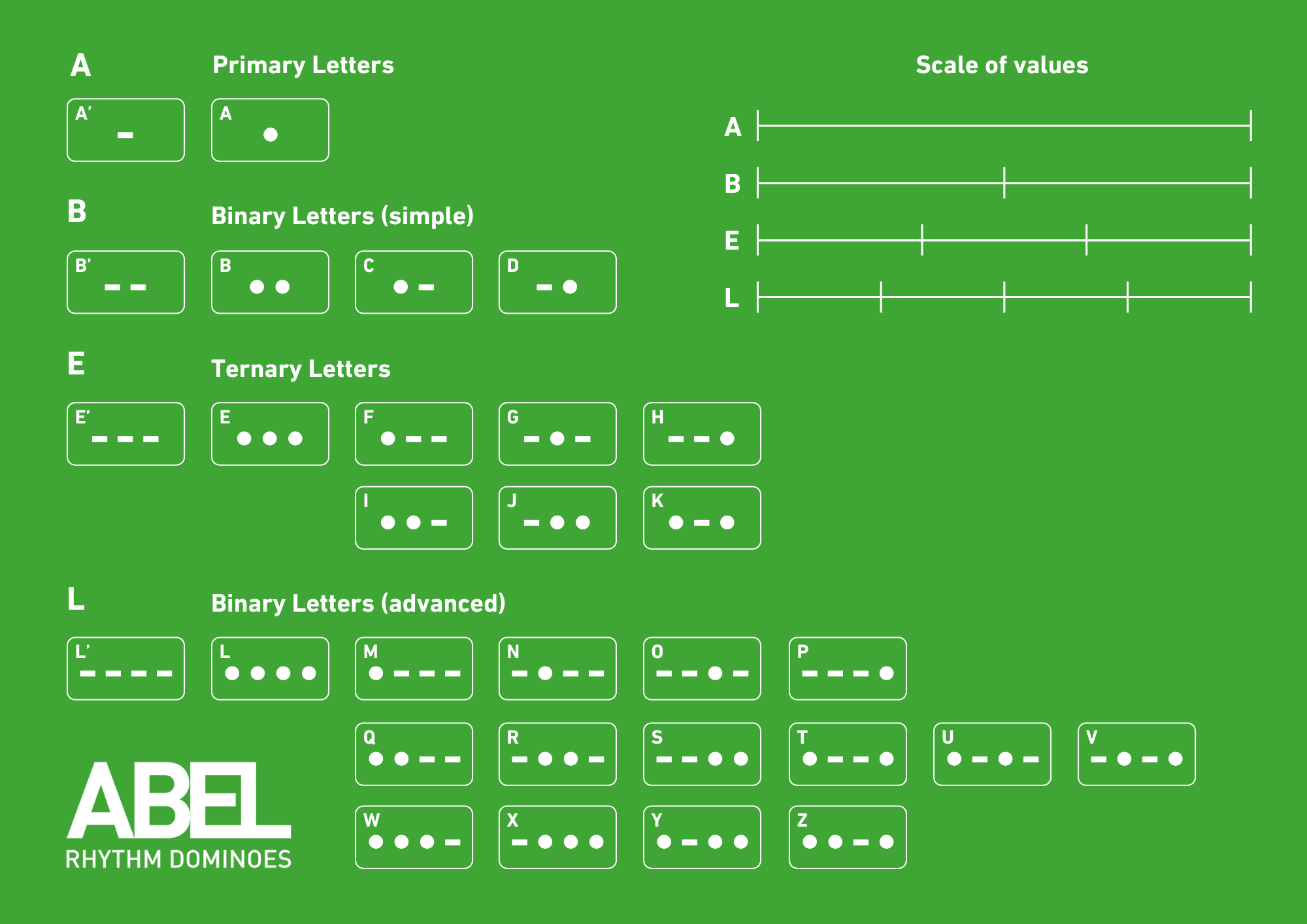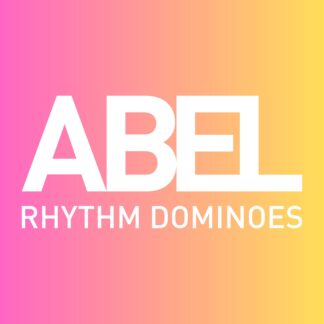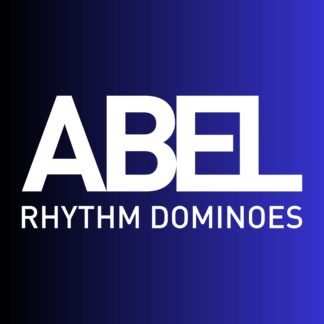Description
1 RHYTHMIC CELL = 1 PULSE
The number of symbols (dashes and/or dots) on each cell tells you what the subdivision of the pulse is :
1️⃣ A’ or A
2️⃣ B’ or B C D
3️⃣ E’ or E F G H I J K
4️⃣ L’ or L M N O P Q R S T U V W X Y Z
The dots represent the notes that must be played with the instrument of your choice (like claves for example).
The notes are musical sounds that have a pitch and duration. The pitch of the note refers to how high or low the note sounds. The duration of the note is the amount of time the note lasts.
The dashes represent rests or the duration of the previously played note.
A rest is the absence of sound production for a defined period of time in music.
If you use a musical instrument that allows you to control the duration of the note (like the guitar, the piano or the violin for example), you can choose to consider the dashes as rests or as the extension of the previously played note.
Color codes on the cells allow you to easily identify similar rhythms in different subdivisions 🟢🟡🔴
It is important to first work on the rhythmic cells with only dashes (A’B’E’L’) counting them out loud in order correctly and using a metronome to be comfortable when you have to play (A to Z).
ℹ️ Dashes can also be replaced with ghost notes for advanced players.
This product contains 9 versions of the ABEL Rhythmic Alphabet™ + the ABEL Scale Of Values™:
1 x The Original Alphabet™
1 x Easy-to-print (black) version™
1 x Easy-to-print (black/red) version™
1 x Blue version™
1 x Red version™
1 x Orange version™
1 x Purple version™
1 x Green version™
1 x The Pie Chart Version™
+
1 x ABEL Scale Of Values™
The PDF files contained in this store are for private or educational use only. Once you have placed your order, the printable material remains downloadable indefinitely, but any reproduction, sale, or transfer without our consent is strictly prohibited.


